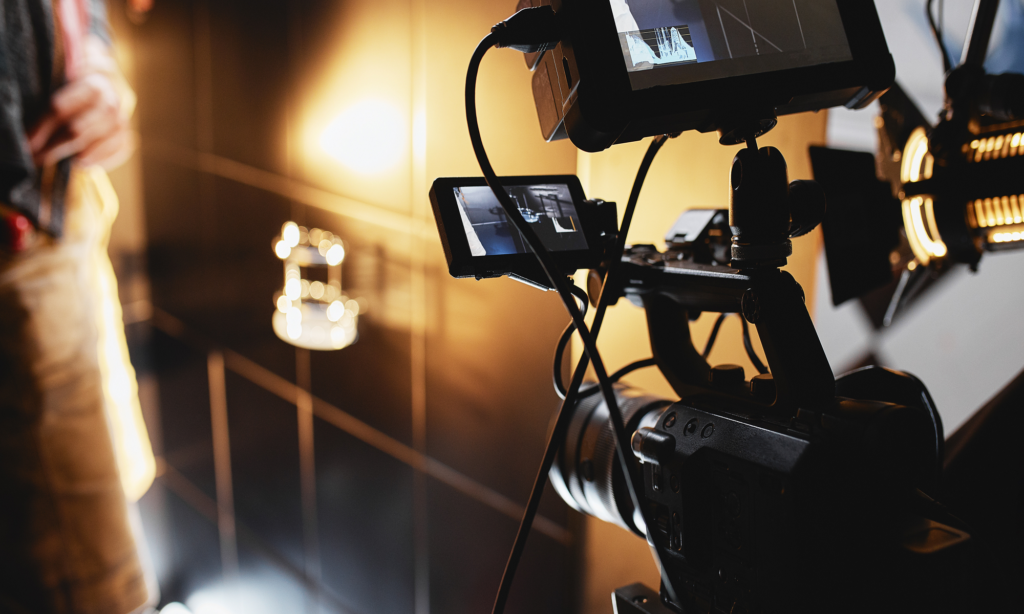Lighting, camera, deposition! Technology is revolutionizing the legal industry in the digital age. Video depositions have transformed depositions. Now attorneys and witnesses can visually record every word and gesture throughout a deposition instead of reading transcripts or listening to audio recordings.
Exactly what is a video deposition? Why are they crucial in today’s law? We’ll discuss video depositions and their dos and don’ts.
What is a Video Deposition?
A video deposition is a legal proceeding that uses video instead of written transcripts or audio recordings. It lets attorneys record witnesses’ remarks, facial expressions, body language, and mood. The visual element can be strong when presenting judicial evidence.
Most depositions entail setting up cameras and microphones in a room where all participants congregate. Attorneys interrogate and record the witness at a table facing the camera. A good cameraman captures every moment clearly.
Video depositions are popular for many reasons. First and foremost, they accurately reflect witness testimonies better than written transcripts or audio recordings. Questioning can reveal someone’s believability or emotional condition through nonverbal indicators.
Video depositions allow attorneys to replay footage and analyze small pieces of information that may have been overlooked in real time. This is helpful while preparing for trial or cross-examining witnesses.
Recent technological advances have made remote video depositions easier than ever. Attorneys can now depose witnesses remotely using high-quality webcams and video conferencing software.
Video depositions bring cases to life for judges and jurors by increasing transparency and authenticity.
Why are Video Depositions Important?
Video depositions are essential to witness testimony collection and preservation. They have significant advantages over written or audio-recorded depositions, making them an important tool for attorneys.
During trials, video depositions can be helpful. Witnesses’ facial expressions, body language, and tone of voice lend context to their testimony. These visual signals help jurors evaluate trustworthiness and make informed decisions.
Video depositions save time and resources. Attorneys can replay critical trial moments without reading lengthy transcripts. This saves court time and accurately represents the deposition.
Video recordings are less misinterpreted than printed transcripts. Tone and emphasis are lost in text but captured well in movies, decreasing miscommunication.
Video depositions allow witnesses who cannot attend the trial to participate remotely. In today’s worldwide society, people may live far from the courts or have health conditions that make travel difficult.

Dos and Don’ts of a Video Deposition
To ensure a good video deposition, there are dos and don’ts. Follow these key guidelines:
1. Prepare thoroughly: Like any deposition, video depositions require preparation. Recall crucial details, review all relevant documents, and anticipate inquiries and objections.
2. Don’t rush: Video depositions sometimes include rushed replies. Understand each question before responding wisely and clearly.
3. Remind professional: Even though you’re not in court, you must remain professional throughout a video deposition. Dress well, communicate properly, and avoid distractions.
4. Remember nonverbal cues: Video depositions record your speech, body language, and facial expressions. These nonverbal cues can affect how your testimony is received.
5. Listen carefully: Video depositions require active listening to opposing counsel’s queries. Be attentive to answer questions correctly.
6. Don’t dispute with opposing counsel: Depositions can be contentious, so don’t get defensive. Maintain composure.
7. Take breaks: Video depositions can be psychologically demanding due to their longer duration compared to traditional ones.
Take short stops to regroup or confer with your legal team before continuing.
These dos and don’ts are broad principles for a successful video deposition; consult your attorney for case-specific advice.
How to Prepare for a Video Deposition
Video deposition preparation involves significant planning and detail. These key steps will help you navigate the procedure confidently.
First, read the case materials. Review any pertinent deposition documents, reports, or evidence. This will aid question anticipation and response clarity.
Then, practice your testimony. Practice your responses to potential queries. Consult a lawyer for guidance and a realistic deposition simulation.
Being cool and composed during the video deposition is also important. Body language speaks volumes, so stay comfortable but attentive during the process.
Make sure you have all the equipment before the deposition. Make sure your audiovisual setup works before you start.
Consider logistics like location, scheduling, and comfort. Arrive early to set up and gather your thoughts before starting.
Following these criteria will ensure a successful video deposition!

What to Wear to a Video Deposition
Video depositions are affected by attire. You should dress well for these court sessions even though there is no dress code. When choosing clothes, avoid these mistakes:
Most importantly, dress professionally. This entails wearing business attire instead of casual or formal. A suit or jacket with a button-down shirt is always safe for men and women.
Avoid bright colors and patterns that could distract on camera. Use neutral colors like black, gray, or navy blue. These colors are professional and won’t distract from your testimony.
Remember that the deposition is about credibility and trust. Avoid exposing clothing, heavy jewelry, and showy accessories.
Also, consider comfort during a video deposition. Choose clothing that allows you to move freely without feeling constricted or uncomfortable as you may be sitting for long durations.
Attend to hair and cosmetics (if applicable). Stay natural and avoid heavy cosmetics and hairstyles that could distract from your words.
Following these video deposition attire recommendations will help you look professional and comfortable.
Conclusion
Video depositions are vital to litigation. They let attorneys acquire crucial evidence and testimony that can change a case. This article’s dos and don’ts will help you perform a professional video deposition.
Review your case materials and practice answering questions to prepare. Dress well to impress the jury or judge who may watch the film. Keep calm, talk clearly, and listen carefully during the deposition to give correct answers.
Understand the importance of video depositions and follow these best practices to present your case effectively. Video depositions strengthen your case and increase your chances of success, whether you’re a plaintiff or defendant.
When a legal problem demands a deposition, remember these suggestions. A well-done video deposition can prove your point or disprove others.
You may maximize this great tool with correct preparation and conduct. Remember: good audiovisual recording of compelling witness testimonies is essential!
With information and practice, enter your next video deposition with confidence!












